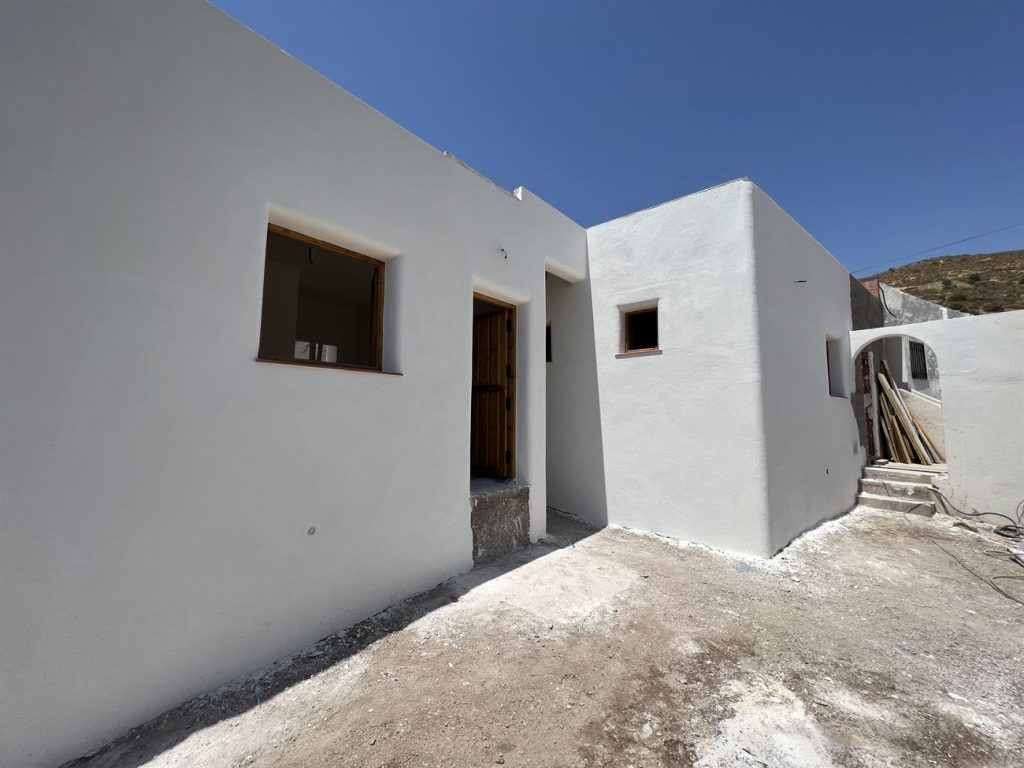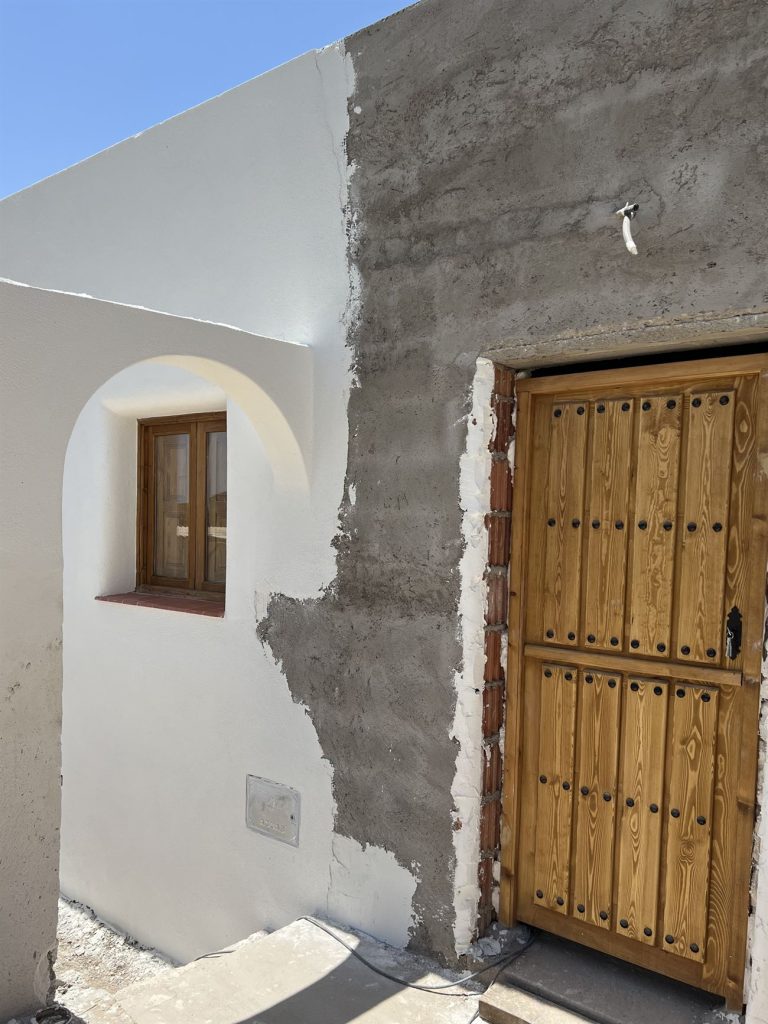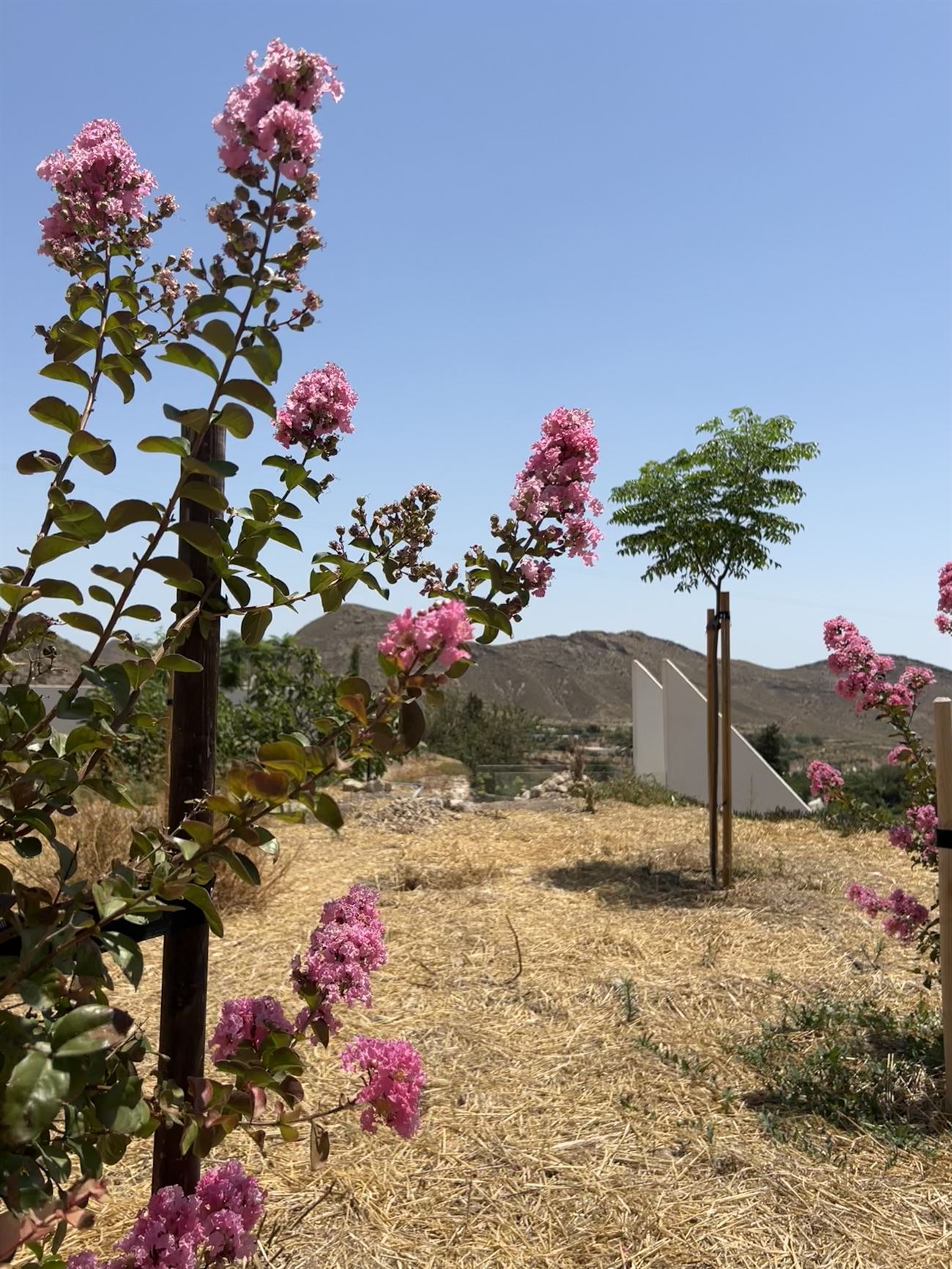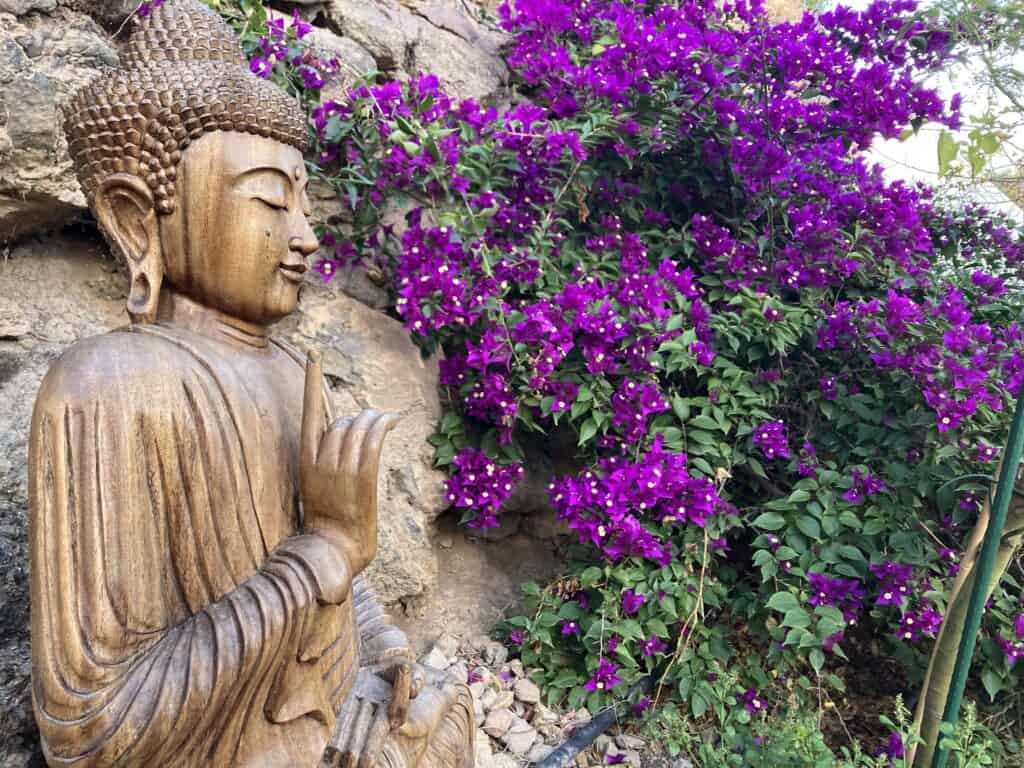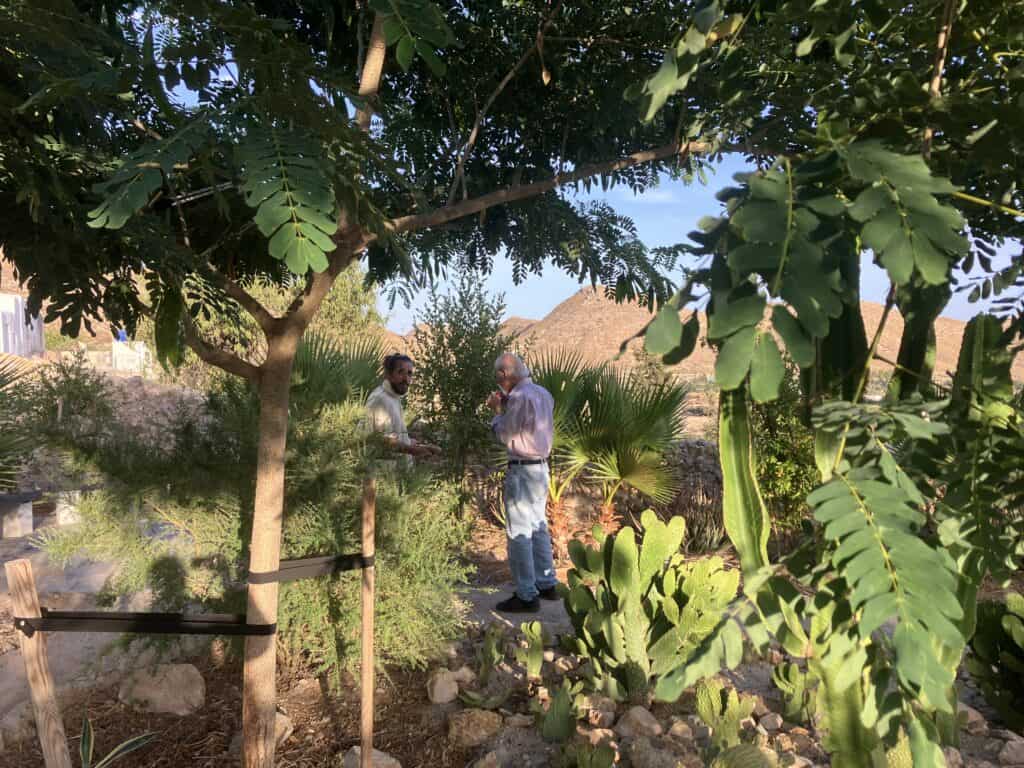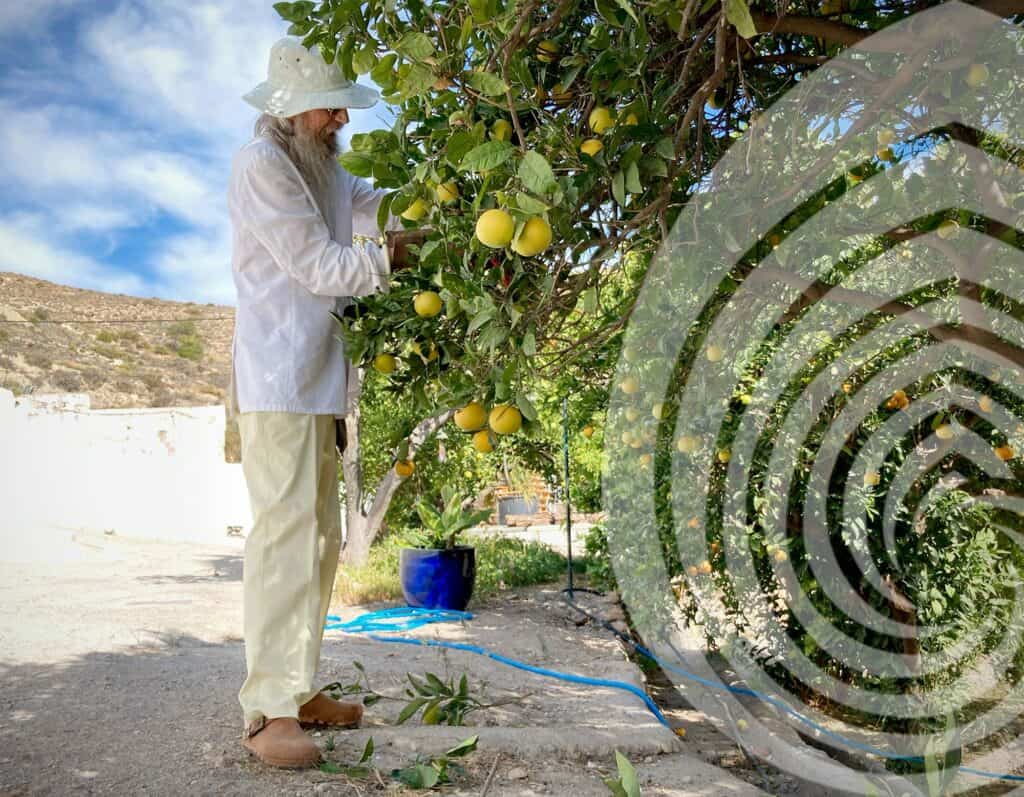July started with an official heat wave, but even after the heat wave was over, the weather felt the same during the entire month. For those who like to get up early in the morning, the hours between 6am and 10am are agreeable for outside work and after that being outside means looking for shade, drinking plenty of water and protecting the eyes and skin up until 8pm. The few hours of daylight that are left before the sun sets, are excellent for watering and caring of the plants and trees or, like Yoginâm likes to do, drink a cup of tea in the pavilion.
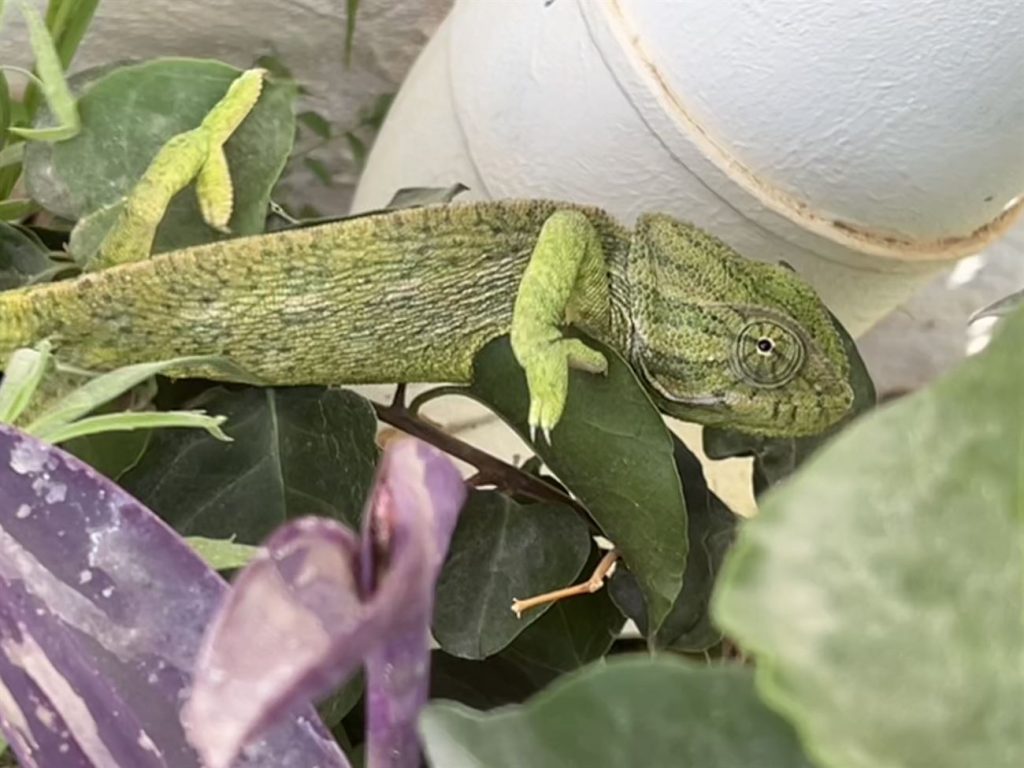
Only a few guests visited us in the past weeks. Edwin’s son Rowin and a friend of him could use Edwins mobile home (his van) for their holidays in Portugal and they stayed the night of arrival and before departure, enjoying the silence and a good bed. Rowin was here before and he promised us to return for a week in fall, not just to see his father, but also because he really likes our place and enjoys our vibe. Hilde stayed with us for a week and it seemed easy for her to find her pace and rhythm in the Asharum, in complete harmony with everyone and everything. We expect a new guest this week that has been on a reflection week in Amonines which has inspired her to learn and experience more in the presence of Yoginâm in Níjar. We probably are as excited as her to find the optimal experience for all involved. Also Léon is planning again to visit Yoginâm around the turn to the month of August.
The garden of the Asharum Nijar: Back to the Roots
In the garden we have shifted to a new watering regime; following the advice of Chris we try to water using the irrigation system twice a week for a minimum of 4 hours. In this way the water reaches deeper layers and the top layer is allowed to dry a bit so the plants are stimulated to make deeper root systems, making them more resilient and improving the soil structure in general. Of course the vegetable garden and some other plants need more watering so every evening we take care of those plants that need a more frequent watering schedule. We do try to avoid watering plants every day, as that will make the plants ‘lazy’, having a superficial root system and making them more vulnerable in general. Also the older trees, that were used to being flooded through the old open channel system, need some extra watering as the irrigation system only brings water around their base and the roots have spread wider.

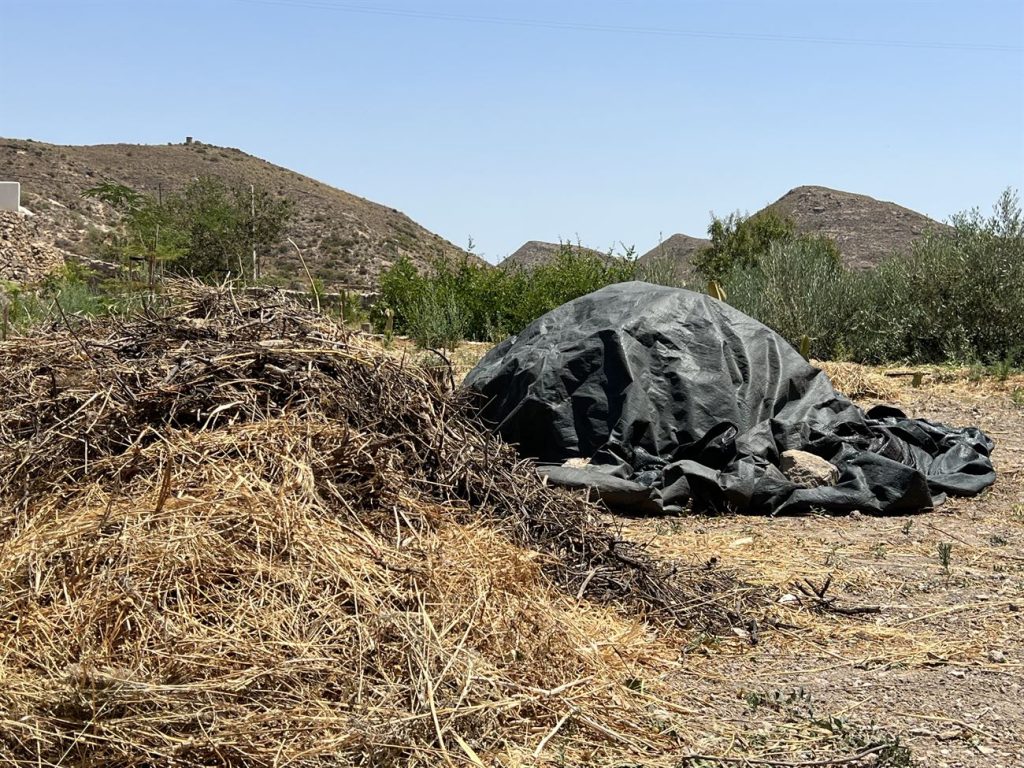

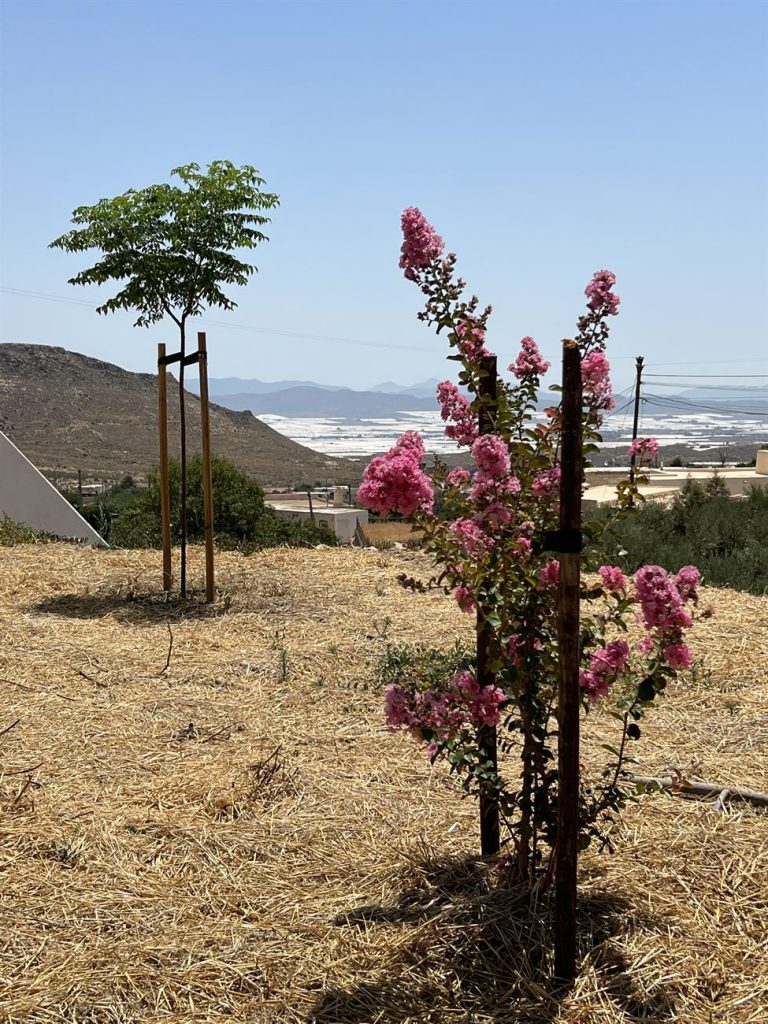
During the summer heat we try to make more compost that will help us in our food production attempts this fall. Without much fresh grass and other clippings and the high evaporation rate it’s hard to find the right (water/air/nitrogen/carbon) balance throughout the compost pile for optimal decomposing in our boxed compost pile under the laurel trees, and we are experimenting with piles covered with plastic on several locations. Also, we make use of yeast as a starter for the composting process by pre-mixing dry yeast with molasses, water, fresh grass and dried horse manure.
At the same time, we try to keep up with the removal of dried grasses and invasive pants around the trees and other plants, keeping the general appearance of the garden tidy and uncluttered. Last year we had the pumpkin surprise in the banana pit, inspiring us to plant more of them this year. Now we find that more surprise pumpkins have sprouted and are growing around several trees. First there was some confusion as we all thought one of us had put them there intentionally, but after careful inquiry none of us made such an effort. It is now suggested that with the treatment of the palms and the trees that did not seem to be in an optimal condition, the compost we used had some pumpkin seeds. Which means it was not fully decomposed, which is not a good thing, as this material actually takes nitrogen from the surrounding soil to complete decomposition. Nevertheless, the trees that received the treatment look better now, and are accompanied by beautiful green tapestries around their base. Keeping their roots moist and cool.

From the gardens in Salobreña we were offered cactus cuttings from the cacti that were too big to keep up in the gardens there. Edwin and Tim made the trip to Calamedina to pick up around 40 cuttings, varying in size from 30-120 cm long and 10-20 cm thick. One evening we all participated in planting them in several different spots that were pointed out by Yoginâm. As cactus cuttings of this size are more difficult to root, especially while they are in the full sun, we hope they will survive and enhance our garden with their stately splendour.
More building and improving
The workers keep on building these months and the new kitchen and the two new rooms have been plastered white, making our renovations visible from the village across the canyon that separates ‘El Cerrillo’ neighbourhood from the village of Níjar. (The canyon is called ‘rambla’ in Spanish, indicating a place where water runs off in a possibly torrential stream after the occasional rains. These ‘ramblas’ are found all over Spain, remaining dry most of the year, but when it has rained they can become quite dangerous to cross) The rooms have been fitted with doors and we can already see how the room will look like when it is done. We are already preparing the room decor by ordering the bed and a desk.
A beautiful round porch has been created connecting the wall, separating the terrace in front of the new kitchen into two parts, to the kitchen building. This wall ensures there is always a spot not too visible from the street and creates a protected spot from the main wind direction. In the garden, Edwin is working on a stone staircase, to replace one of the wooden staircases on one of the farthest terraces, next to the Triad. The removal of the wooden staircase makes the Triad more pronounced in the landscape, giving it the exposure it deserves.

